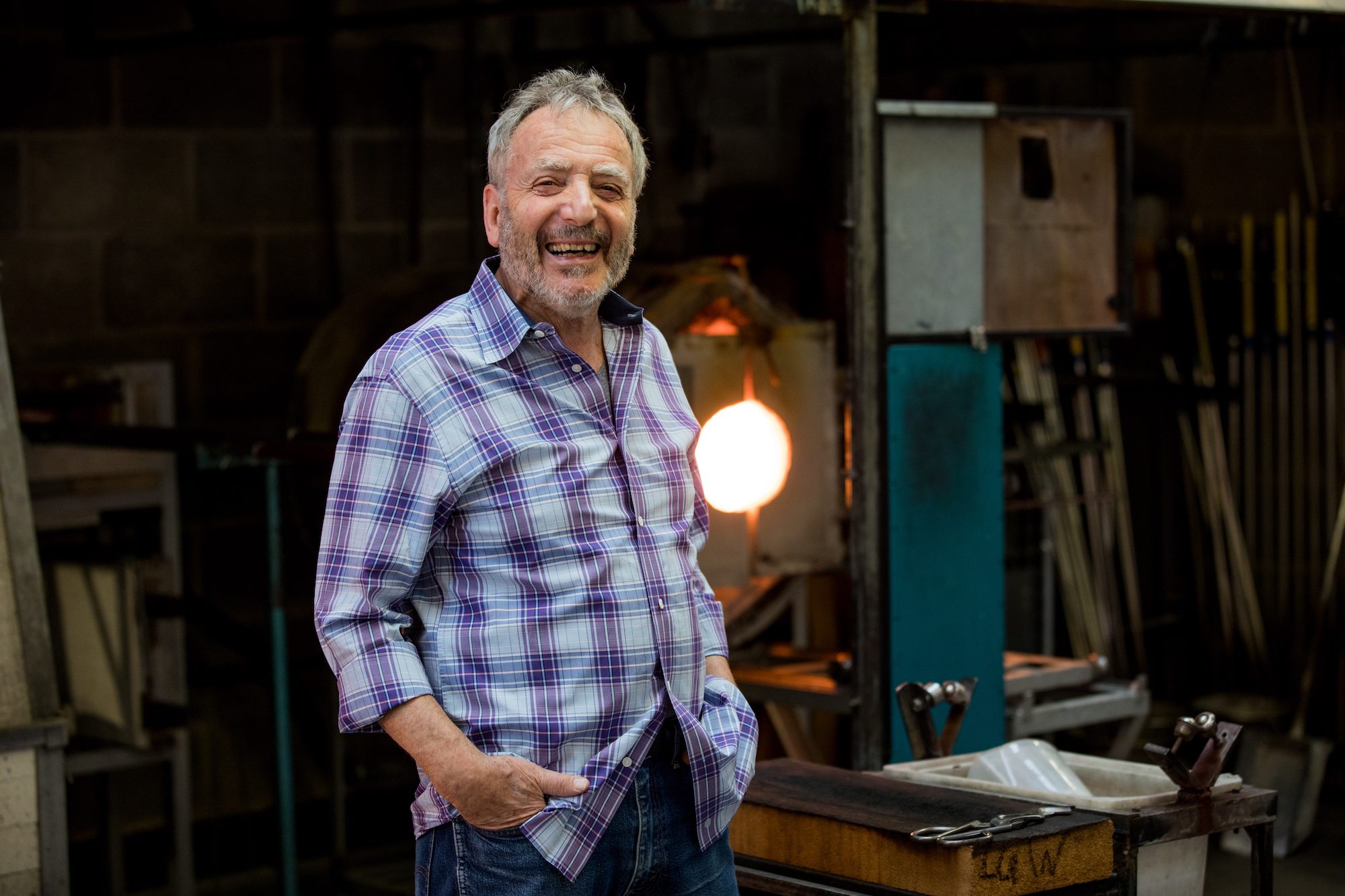PETER LAYTON BIOGRAPHY
Artist, pioneer, mentor, Peter Layton is one of the founding fathers of British studio glass. He discovered the art form while teaching ceramics in the US in the mid- 1960s, and has played a major part in elevating glass from an industrial medium to a highly collectable art form. Most importantly, he gave it a home in the UK.
The London Glassblowing studio has nurtured and produced some of the world’s leading glass artists and continues to do so to this day. This is thanks to an open door policy extending to artists, collectors and the curious public who wander into the Bermondsey Street gallery and studio. Here they will find the energetic octogenarian in jeans and trainers bouncing between his “family” of resident artists, advising, collaborating and teaching, while producing his own unmistakable work.

WORK
Peter has always taken inspiration from his environment, natural or manmade: a stone wall on a snowy day, the London skyline, or works by great painters. From a mere detail, a flash of a Klimt orange or a slick of oil on the Thames, he creates painterly works with a masterly use of colour. Throughout his career, he has been courted by major art institutions, commercial buyers and private collectors. His work is held in various museums in the UK, Europe and America, including the Victoria and Albert Museum, London and the Fitzwilliam Museum, Cambridge, UK.
FOUNDATIONS
Peter was born in 1937 in Prague, but two years later, his parents were forced to flee to Britain. They eventually settled in Bradford, in the North of England, to be near his grandfather, a pathologist and colleague of Sigmund Freud, who nurtured Peter’s passion for art through concerts and exhibitions.
Glass was not Peter’s first love: a foundation degree from Bradford Art College, followed by a diploma at London’s Central School of Art and Design, led him to specialise in ceramics. Then, a teaching post at the University of Iowa in 1965 changed everything. The American studio glass movement was born in the swinging sixties, modernising a centuries-old practice for the time of Warhol, the Space Race and rock ‘n’ roll. Here was a medium where quick wit and spontaneity were as important as creativity, where the process was an adventure, and the final results were often unexpected. Peter was mesmerised, immediately enrolling in the University’s glass blowing programme and learning what he could from the movement’s forerunners such as Marvin Lipofsky and Sam Herman.
On his return to the UK in 1968, Peter realised that if he were to share the magic of studio glass he had to start from scratch: glass was still regarded as a poor cousin to paint, sculpture and pottery – a closeted trade, passed down between families or behind closed factory doors.
He started softly with a small glass studio in the Highlands of Scotland while relying on pottery to ensure a living. However, the big city called, as did glass – it needed more dedicated champions. In 1976 he opened the London Glassblowing Workshop in an old towage works on the Thames at Rotherhithe.
